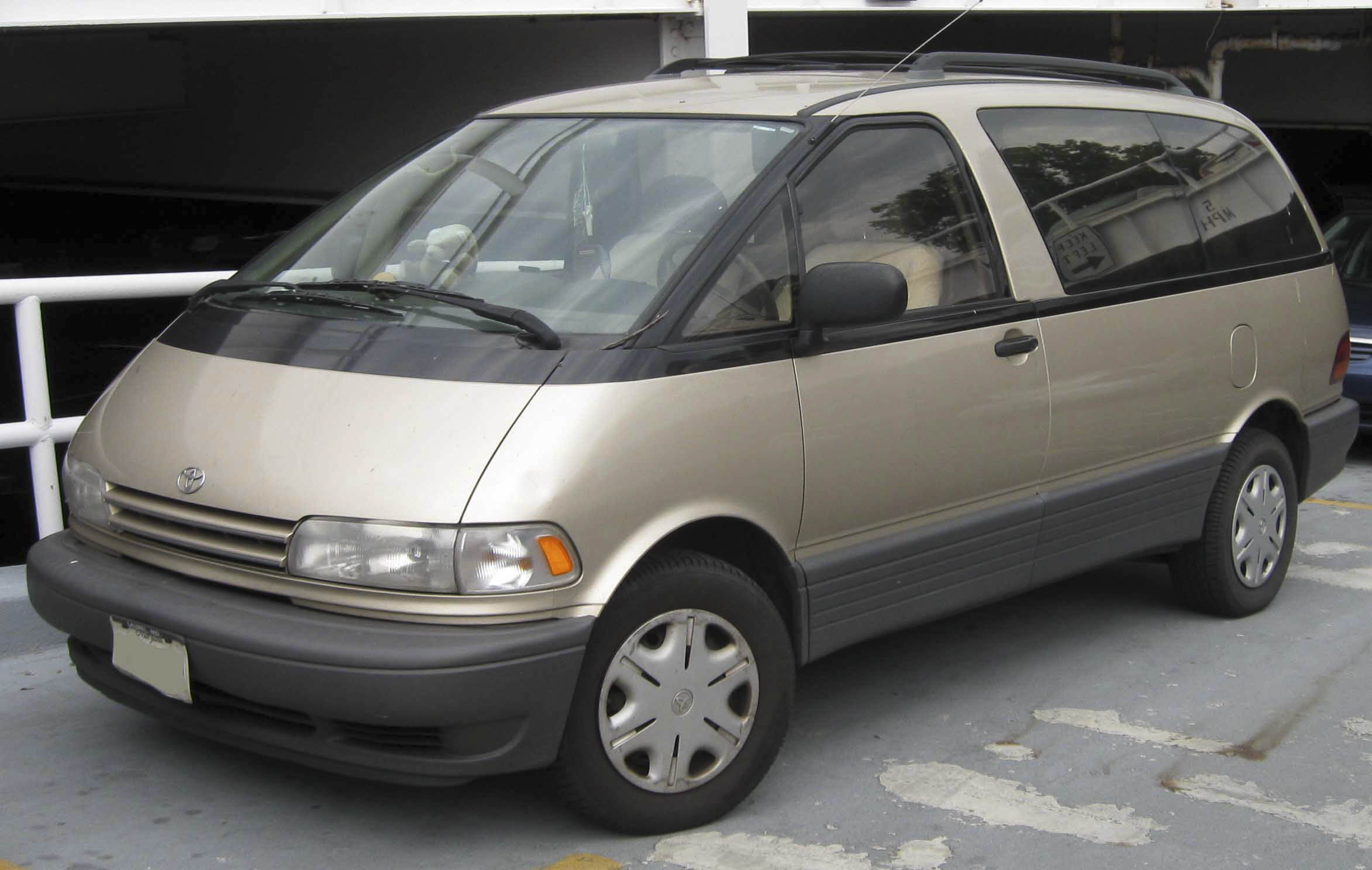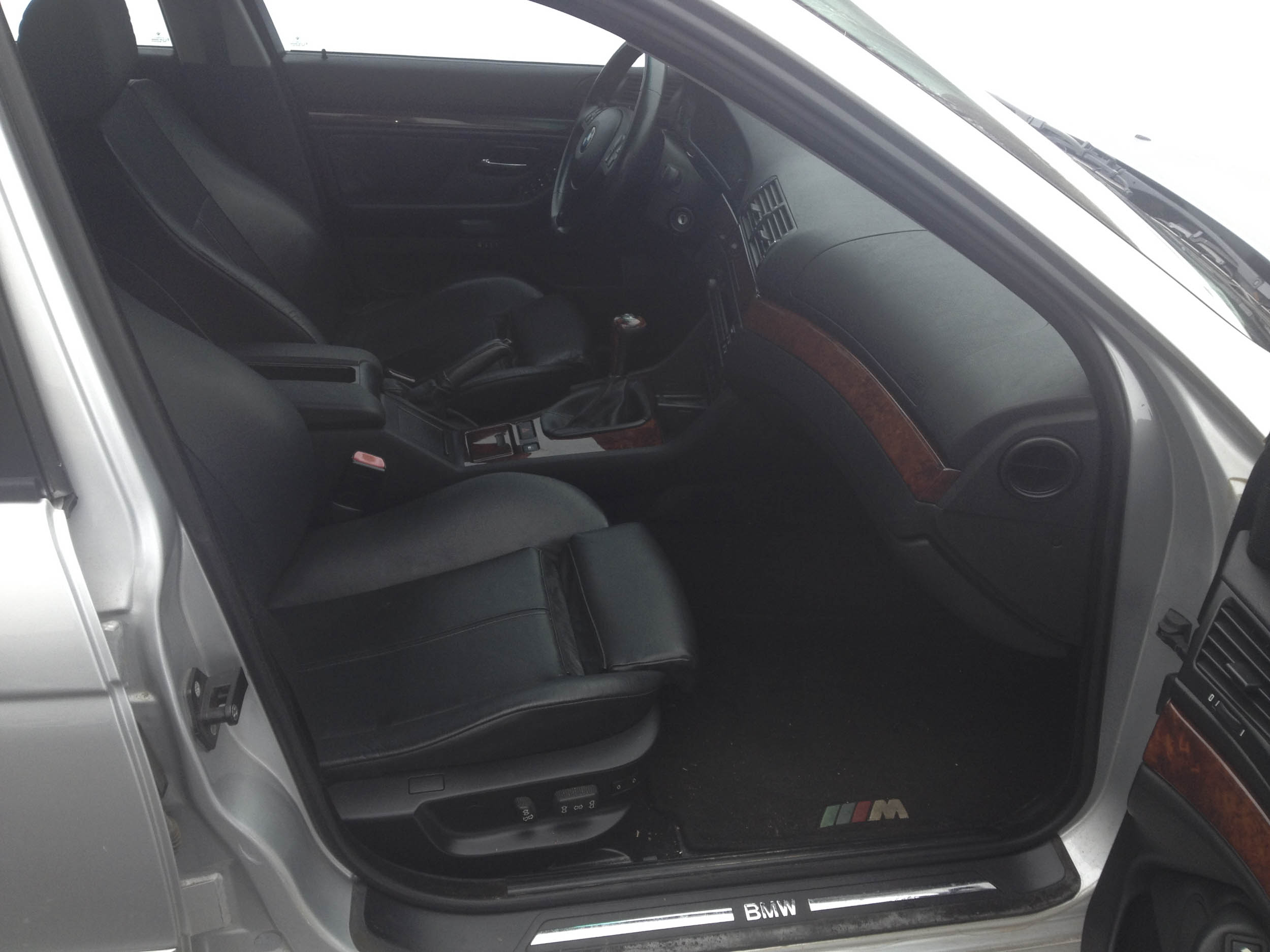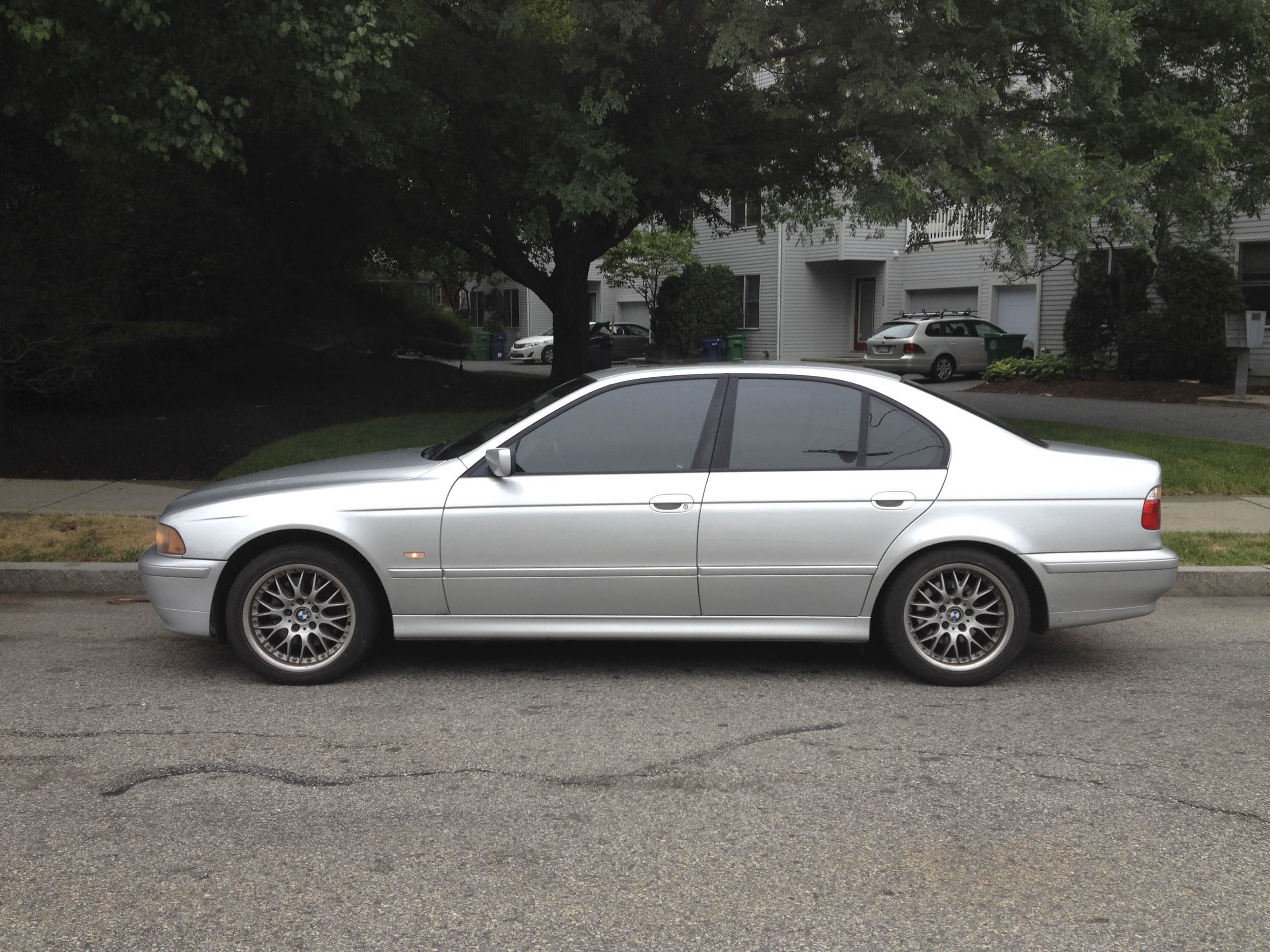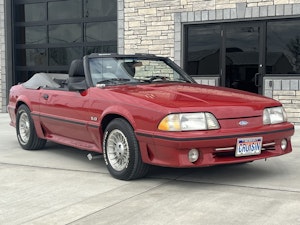Media | Articles
My 2003 BMW E39 530i is the best daily driver I’ve ever owned
About a month ago, I wrote a story about the worst car I ever owned—the 1970 Triumph GT6+ that I bought upon graduating high school 42 years ago. The piece generated more responses than anything I’ve written for Hagerty. Some folks thought I was too hard on the feisty little Brit. Others clearly shared my Leyland-Lucas experiences. Still others chimed in with their own horror stories about other makes and models. It was great.
I thought I’d examine the flip side of that coin—the best car I ever owned. And, to make it interesting, I’m not talking about lightly-used passion cars. It’s easy to wax rhapsodic about the Hagerty-insured vehicles that you only pull out every few weeks to drive to shows when the weather’s perfect. I want to talk about daily drivers.
We car people have different standards for daily drivers than most of the rest of humanity. We’re less likely, I think, to daily drive soul-less econoboxes than most folks. We want even our daily drivers to be exciting. How people manage this varies substantially. Some buy or lease a new car every two years, but neither my wife, Maire Anne, nor I have ever owned a new car. For her, I’ve tried to procure cars that aren’t too long in the tooth. As for me, most of the last 35 years I had a five-mile commute. Now I work from home, so I have no commute. This has meant that my daily can be just about anything, so I’ve tended to get myself into high-mileage BMWs that I never could’ve afforded when they were new.
The big arc of my car ownership is probably analogous to that of most of you. After the experience with the Triumph, I got into BMWs, as they were more reliable and roomier. I daily-drove a 2002 for many years. When Maire Anne and I started a family in the 1980s, we initially used the 2002, but found that it was massively inconvenient wrestling a toddler into and out of a child seat in the back of a two-door car. We used her 1969 Volkswagen Westfalia camper for a while, but when rust began to eat it, we moved to four-door BMWs. There was a 1973 Bavaria, then a 1979 528i, then a 1983 533i.
Marketplace
Buy and sell classics with confidence

As the family grew, we tried to prevent the inevitable minivan phase by buying a used 1983 Volvo 245GLT wagon with a third seat. It wasn’t a needy car, but the reports of them eating turbos at 90,000 miles and the heated seats catching on fire made us sell it before either of those disasters befell us. There was then a dalliance with VW Vanagons (I had six of them) that went on longer than it should’ve before we finally accepted our fate and, for a decade, threw in our lot with Japanese minivans.

For about six years, we had a 1991 Toyota Previa with a stick. Both Maire Anne and I really liked it, and the car’s quirky mid-engine rear-wheel-drive five-speed configuration fed my car guy soul. It didn’t, however, fit the stereotype of bullet-proof Toyota reliability, and at around 90K it became surprisingly needy and we sold it. It was replaced by a 2000 Mazda MPV. It was smaller than the Previa, and we both decried the loss of the stick, but it was pleasant enough to drive. It, however, had a maddening issue with the alternator. The MPV used the Ford 2.5-liter Duratec V-6, and the alternator was low enough that water would splash up on it and cause it to fail prematurely. Worse, in order to replace the alternator, you had to either remove the exhaust manifold or one of the half axles. After the third alternator failed, I sold the MPV.

Once the kids were out of the house and Maire Anne no longer needed a minivan, she began driving Honda Fit four-door hatchbacks. She had a 2008 first-gen and then a 2013 second-gen, both manual-shift sport package cars. We really liked them—small, nimble, quick enough, fun to drive, with remarkably flexible seating and storage. But those are her cars, not mine.
There were also a string of Suburbans (six of them), used mostly to take the family on the big annual beach vacation and occasionally move stuff. Neither of us ever daily-drove any of them. I liked some more than others. The one that kept popping brake lines was especially troublesome.
While Maire Anne had minivans and while there was a Suburban around to haul big stuff, I continued driving BMW sedans, owning most 3 and 5 Series models of the 80s and 90s, and replacing their window regulators when they broke. Then, when the minivan was gone, I switched to BMW wagons, as they made it easy for me to continue to buy and drive home with the requisite supply of wheels and tires and Recaro seats. First I had a 1999 E39 528iT Sportwagon. It was a very cool vehicle—five-speed, sport package, black with a black interior, slightly hunkered-down, with a really nifty self-leveling rear suspension that would pump itself up if you threw a lot of weight in the back. And it handled way better than a car that size had a right to. Unfortunately, it was one of those cars that, in buying, you signed up for the repair-of-the-week plan and didn’t know it. Things went wrong with that car that I’ve never had happen on any other BMW. One cold day, the crankcase ventilation valve (CVV) froze and sent oil into the intake manifold, nearly hydro-locking the engine. The pneumatic self-leveling rear suspension failed, leaving the car a beached whale. And, my favorite, in a Triumph-worthy act of metal fatigue, the car broke a front spring, which then punctured the sidewall of the tire. It was my daily, but when its needs became that of an enthusiast car, it was time to sell. The GT6 may have been the worst car overall, but the 528iT was my worst car in adult daily-driver-dom.

After that, I drove an E46 325Xi wagon, also a stick sport package car. For some reason, it wasn’t nearly as needy, repair-wise, as the E39. The all-wheel drive was great when there was snow on the ground, but the rest of the time, it made the steering feel heavy. When I needed to replace the front CV joints, I found out how much of a pain that was, decided I never wanted to do it again, and sold it.
And that brings us to our unlikely winner. About three years ago I saw an ad on Craigslist for a 2003 BMW E39 530i for very short money. After owning my money-pit E39 528iT wagon, I was hesitant, but 2003 was the last year of the E39, and the late cars have a reputation for being less troublesome. The ad said that the car had been parked for two years due to an “electrical problem.” I called and asked the seller what the problem was.
“When you try to jump-start it,” he said, “it makes that clicking sound.”
I explained that that was the starter solenoid engaging and disengaging without spinning the starter.
“I know what it is,” the seller said, “but it shouldn’t do that when I jump it. I think it’s something in the wiring.”
I explained that, in cold weather, the low temperatures coupled with high resistance in dirty connections often makes it necessary to completely remove a dead battery, install a new or freshly-charged one in the car, and clean the terminals in order to get a dead car to start.
“I’m an electrician,” the seller said. “I know about high resistance.”
I had to hold my tongue and not explain that I’d written an automotive electrical book.
More as a fact-finding mission than anything else, I took a freshly-charged battery and drove out to Bellingham, Massachusetts. I remember it vividly because it was Presidents Day Weekend and it was about 15 degrees out. When I arrived, I found the car partially embedded in a snow drift. Other than wearing a set of unfortunate wheels that looked like they came from Pep Boys, the car looked surprisingly good. The Polaris (silver) paint was in great condition for a car with 180k miles on it. And I could tell that it was a sport package car due to the black shadow-line trim around the windows. When I opened up the door, the black leather sport interior looked like a car with 80K on it, not 180K.

I yanked out the old battery, dropped in the freshly-charged one, cleaned the terminals, twisted the key, and the car started almost immediately. The owner was stunned. He dug around in the garage and found a compressor. We shoveled the car out of the snow drift, inflated the tires, and took it for a test drive. Other than the tires being flat-spotted, the brakes chattering from deposits on the rotors, and the check engine light being on, there wasn’t much wrong with it.

“All’s fair in love and Craigslist,” I told the seller. “You now know that you can run down to Autozone, spend $150 on a battery, and sell this as a running car. But it’s not registered, insured, or inspected, and the check engine light is on. I’ll give you twelve hundred for it right now.”
“How about fifteen?” the seller countered.
“That,” I said, “is exactly the right price for this car.” My wife drove me back down later that day. I drove it home without incident, and it’s been my daily ever since.
When a car has been parked for two years, you always ask yourself “why,” and if you buy it, you always wait for the other shoe to drop. BMW E39s are great cars, but it’s very common for them to have cooling system issues, to leak oil and power steering fluid, and to need front-end work. And, as with any car, the check engine light being on could be nearly anything. I pulled the codes and they reported an evaporative leak. I have one of those inexpensive smoke testers (basically a paint can that heats up mineral oil) that I use to look for vacuum leaks. The problem was caused by a rotted vacuum hose around the back of the head that I never would’ve found without the smoke tester. I replaced the rotted hose, reset the check engine light, and it never came back on.
The car, obviously, needed the rotors and pads replaced after having sat for two years. I soon found it also needed a Final Stage Unit (FSU), the big resistor that controls the blower fan. When that goes bad, it can (and did) drain the battery in a matter of hours. I found a proper set of the original BBS Style 42 wheels to replace the car’s horrible aftermarket shoes. As I wrote about last month, I just did the front lower control arms. But, repair-wise, that’s been about it.

While in general I prefer smaller lighter snappier vehicles, I’ve really grown to love this 530i sport. The 228-horsepower M54 engine has just the right amount of power. It lacks the grunt of the eight-cylinder motor in the 540i, but it also doesn’t suffer from premature timing chain guide wear.
I joke that it’s the car I refer to with old man adjectives. It’s smooth. It’s quiet. It’s comfortable. It’s got a great stereo and great air conditioning. I can pound out hundreds of miles in it without batting an eyelash. And, although it’s not a wagon, it has fold-down rear seats. I even fit the front subframe of a 2002 in there to bring it to get welded.
Most BMWs built since the early 1990s use a lot of plastic in the cooling system. In the E39, there’s a plastic expansion tank, a plastic thermostat housing, a radiator with plastic tanks, hoses with snap-on plastic necks molded into them, and often a plastic impeller on the water pump. After a certain number of years, miles, and heat cycles of the engine, the plastic becomes brittle, and one day you hit a bump, the plastic cracks, the car catastrophically loses all its coolant, the engine overheats, and you weep openly in the breakdown lane. For this reason, when I buy a car like this, I typically spend the necessary $500-ish in parts and take a weekend to replace all or most of the high-failure plastic components in the cooling system. However, when I bought this car, I still had my short commute on local roads. Why, I thought to myself, don’t I do what most people do and not fix things that haven’t actually BROKEN YET? Initially I was afraid to drive it further than cheap-towing-distance away, but eventually I said what the hell. It’s been to Maine and back a dozen times. I still haven’t laid a finger on the cooling system, though I watch it like a hawk for leaks.
So, there you have it. Against all odds, my 2003 BMW 530i stick sport is the best daily driver I’ve ever owned. I hope I haven’t jinxed it by saying that. It may also be my last daily-driver BMW, as models newer than this are considerably more complicated for the do-it-yourselfer. I’m enjoying it while it lasts. And after this? A second Honda Fit in the driveway isn’t such a bad idea.
***
Rob Siegel has been writing the column The Hack Mechanic™ for BMW CCA Roundel magazine for 30 years. His most recent book, Just Needs a Recharge: The Hack Mechanic™ Guide to Vintage Air Conditioning, is available on Amazon (as are his previous books). You can also order personally inscribed copies here.










